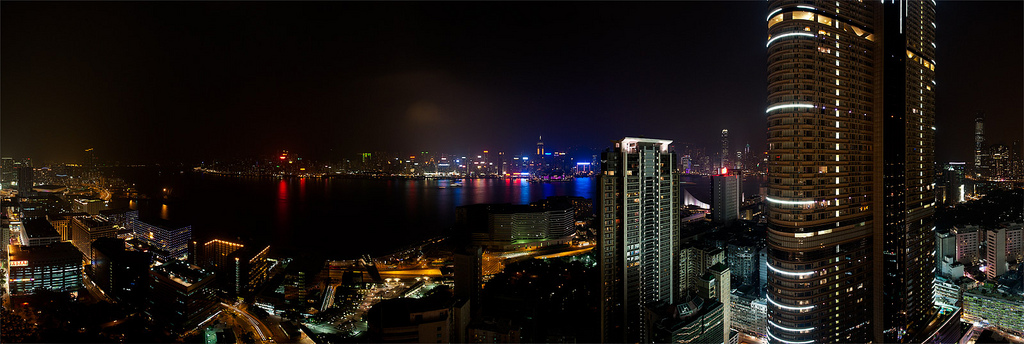Mid-year review shows pollution is getting worse in Hong Kong

A study published by Clean Air Network (CAN) this month shows Hong Kong's air quallity keeps getting worse. The Hedley Environmental Index estimates that, from January to June 2013, air pollution led to 1,606 premature deaths, 18,683 million in dollars lost, 76,361 hospitalizations, and 3.61 million doctor visits. The death toll due to air pollution for the first six months in 2013 is five times higher than the total number of deaths caused by SARS in Hong Kong in 2003. For comparison, from January to June 2012, air pollution led to 1,459 premature deaths, 18,517 million in dollars lost, 71,955 hospitalizations, and 3.41 million doctor visits.
From January to June of this year, CAN found that, other than nitrogen dioxide levels in Tap Mun, all pollutants measured by the Environmental Protection Department (EPD) – nitrogen dioxide, suspended particulate, fine particulates, sulphur dioxide and ozone (NO2, PM10, PM2.5, SO2, and O3) – at all of Hong Kong’s fourteen air quality monitoring stations exceeded the WHO’s annual average air quality guidelines; a situation that is very worrying.
In order to ensure that Hong Kong’s air quality begins to improve, CAN believes that traffic management and implementation of on-shore power facilities at cruise terminals must take place. These areas are the responsibility of the Transport and Housing Bureau and the Commerce and Economic Development Bureau and CAN urges them to work together to implement the policies necessary to safeguard public health.
Roadside and marine emission on the rise
An important indicator of roadside air pollution, levels of nitrogen dioxide (NO2) increased significantly, compared to the first 6 months of 2012.
With the exception of Causeway Bay and Mong Kok’s roadside monitoring stations’ increase of one per cent and two per cent, respectively, other stations recorded an increase ranging from eight per cent to twenty two per cent. The highest increases were recorded in Central and Western (twenty two per cent), Shatin (nineteen per cent) and Yuen Long (eighteen per cent). Furthermore, NO2 levels at all stations, except Tap Mun, exceeded the WHO’s annual average air quality guideline and Hong Kong’s annual standard.
As for levels of sulphur dioxide (SO2), a marker of marine emissions, levels at all stations exceeded the WHO annual guideline (5 µg/m3).
As in 2012, Kwai Chung and Tsuen Wan had the highest SO2 levels out of all stations, while Kwai Chung recorded a drastic increase of sixty four per cent, indicating marine emissions from container terminals has reached an alarming level.
Hong Kong’s new Air Quality Objectives will be ineffective in improving air quality
The rising levels of sulphur dioxide are effectively proving that the new Hong Kong Air Quality Objectives (AQO) are too lax to protect public health.
Under the current AQO and the new AQO for 24-hour sulphur dioxide, all monitoring stations recorded zero exceedances. However, according to the WHO guideline, the number of exceedances is much higher. For example, Kwai Chung recorded 74 exceedances and Tsuen Wan, 53 exceedances, under the WHO guideline, compared to zero exceedances under the current AQO and the new AQO.
The standards of PM10 and PM2.5 under the new AQOs are also not stringent enough. The number of exeedances under the new Hong Kong AQO is a mere single digit number, while under the WHO standard, the number of exceedances reaches a hundred.
Chief Executive Officer of Clean Air Network, Sum Kwong, says, “This mid-year air quality review shows just how critical it is that the Government take immediate action to implement effective policies in order to safeguard public health. There has been no progress seen, for example, with the early retirement of old diesel commercial vehicles, which was announced in CY Leung’s Policy Address in January this year. And after the launch of the Clean Air Plan in March, there has been no concrete commitment made by the Transport and Housing Bureau towards optimizing traffic management policies, as a way to lessen traffic congestion and roadside air pollution. Similarly, there has been no feedback or follow up action from the Commerce and Economic Development Bureau after Clean Air Network submitted a 3,000-strong petition urging the Bureau to install on-shore power facilities to curb ship emissions.”
Source: CAN
Featured image: HK by http://www.flickr.com/photos/66521457@N03/9206821993

Commenting rules and guidelines
We value the thoughts and opinions of our readers and welcome healthy discussions on our website. In order to maintain a respectful and positive community, we ask that all commenters follow these rules.